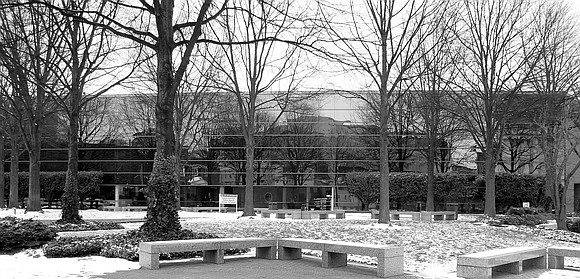City Council members not embracing new location for Social Services building
Jeremy M. Lazarus | 11/15/2018, 6 a.m.
A marketing campaign to sell the public on the $1.4 billion plan to reshape Downtown and develop a new Coliseum is in full swing, even though the legislation to support the plan is still incomplete and has not been sent to Richmond City Council.
Representatives of the developers, NH Foundation and NH District Corp., are setting up public meetings to showcase the proposal.
Initial public meetings are scheduled for 5:30 p.m. Friday, Nov. 16, at the Main Library, 101 E. Franklin St.; 3:30 p.m. Saturday, Nov. 17, at the Westover Hills Branch Library 1408 Westover Hills Blvd.; and 3 p.m. Saturday, Dec. 1, at the Hull Street Branch Library, 1400 Hull St.
Still Councilwoman Ellen F. Robertson, 6th District, and several other City Council members called it unusual for the public discussions to begin before anyone sees the ordinances that would spell out the details of the proposal.
Mayor Levar M. Stoney indicated when he unveiled the proposal on Nov. 1 that he would introduce the legislation at Tuesday’s council session, but that did not happen.
The reason, according to Jim Nolan, spokesman for the mayor: “We are still negotiating aspects of the NH proposal that have not been finalized, so we were not ready to submit ordinances.
“Once we have concluded negotiations to the city’s satisfaction, the administration will prepare and submit ordinances for council consideration, but we are not there yet,” Mr. Nolan stated Wednesday in response to a Free Press query.
The Mayor’s Office has confirmed that the plan for redevelopment would include the city’s commitment to move the Richmond Department of Social Services from its current site at 9th and Marshall streets across from City Hall.
Members of City Council provided erroneous information last week to the Free Press on the relocation site being considered. Instead of the 4700 block of Jefferson Davis Highway, council members now say the correct address is the 2100 block of Walmsley Boulevard on the grounds of the former Philip Morris operations center that was shut down in 2009.
The location is about 6 miles south of City Hall, with little bus service. GRTC route information shows the company runs a commuter line for Philip Morris employees at the nearby production facility during morning and evening rush hours, but has no regular service throughout the day.
Councilwoman Reva Trammell, 8th District, told council colleagues that the relocation could result in a shutdown of the city’s Southside Community Services Center at Southside Plaza. She called that center an important location for South Side residents that allows them to conduct city business without having to travel Downtown.
She said the administration’s plan would put the Social Services building in a location that would be harder for her constituents to reach.
Councilwoman Kim B. Gray, 2nd District, said that relocating Social Services to such a distant location would create hardships for the thousands of residents who apply for food stamps and other services at the Downtown building.
She calculated that East End and North Side residents would spend as much time traveling by city buses to the new location as they would traveling to Washington, D.C. and back.
“This is just so out of the way,” she said. “It’s ridiculous. There have to be other options.”
For example, she noted that the Coliseum redevelopment plan calls for construction of a GRTC transit center at 8th and Clay streets, and suggested that the new Social Services offices could be built atop that center.
Councilman Parker C. Agelasto, 5th District, said the administration has been told repeatedly that the building needs to be relocated to a place that is easy to get to, not one “that is far away from anything.”
According to financial records, the city still owes $3 million on the Downtown Social Services building that reportedly houses 350 employees and serves about 3,600 people a month.
Council members said the administration has assured them that the state would pick up 85 percent of the cost of a new building and that the debt on the current building would be paid off as part of the financing of the new Coliseum.






